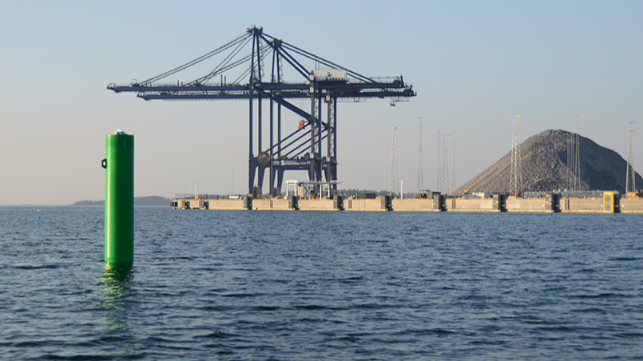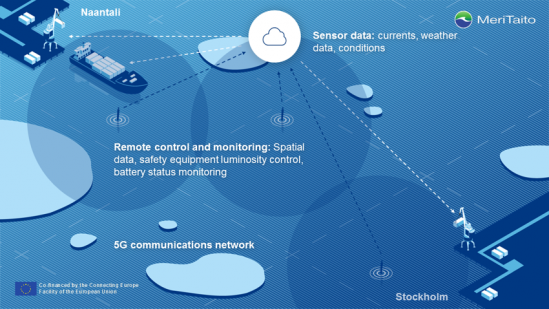Stockholm Norvik Port Installs Smart Green Buoy

A smart buoy has been installed in the shipping fairway just outside Stockholm Norvik Port, Sweden.
The buoy is an energy efficient navigation beacon with the technology to position-monitor and remotely adjust the buoy’s light intensity. The luminosity of the lights to be altered remotely by pilots or Vessel Traffic Management during, for example, bad weather.
The buoy was built as part of the EU Intelligent Sea project which is using digitalization to improve safety and efficiency in shipping fairways. In the project, floating as well as land-based aids to navigation will be equipped with devices for remote monitoring and control as well as environmental sensors. The fairway data produced will be integrated with other fairway and port data by combining several, currently separate, data and control systems into a single digital service cloud. In addition, the project will pilot marine high-speed broadband networks and monitoring of sulfur emissions from maritime transport by using aids to navigation and alternative energy sources for them.

The buoy is being operated in a pilot test for the project which is being undertaken by Ports of Stockholm, Port of Naantali in Finland and the Finnish company Meritaito. The buoy is also part of a project to improve the remote control, safety and handling of information from buoys. This is now being tested in the environmental conditions prevalent in the northern part of the Baltic Sea.
The buoy has a diameter of 80 centimeters and is 10 meters high, 3.5 meters of which can be seen above the surface of the water. It is equipped with LED lights and a battery capacity sufficient for five years of operation. A 25 meter cable chain and 14 tonne concrete attachment secure the buoy on the sloping sea bed.
Meritaito says the green buoy is made of polyethylene plastic, an excellent material choice for buoys as it is maintenance free and long-lasting in water. Plastic is durable in varying ice and weather conditions, keeps its color and does not wear due to seasonal variations or UV-radiation. The slippery surface is less prone to marine growth, and the buoy does not need to be lifted for maintenance like sandblasting and painting, which is the case for steel buoys that need an overhaul every five to 10 years.
The plastic buoy is lighter than a similar steel buoy, so it can be installed and maintained with smaller vessels and lifting equipment. As the movements of the buoy are less to those of similar steel buoy the needed anchorage weights and chains can be smaller as well. In addition to this the chain wears less which will save hundreds of meters of chain over the buoys lifetime.
The buoy is equipped with remote control and monitoring so that maintenance can be planned based on accurate real time data transmitted from the buoy. Information like battery energy level, the exact position of the buoy and other possible monitored functions are accessible through a web browser.
The buoy currently has a five-year battery, but Meritaito is working on alternative energy sources.
The EU Intelligent Sea project will run from 2018 until 2021. The project is funded by an EU grant from the Connecting Europe Facility (CEF) program.
